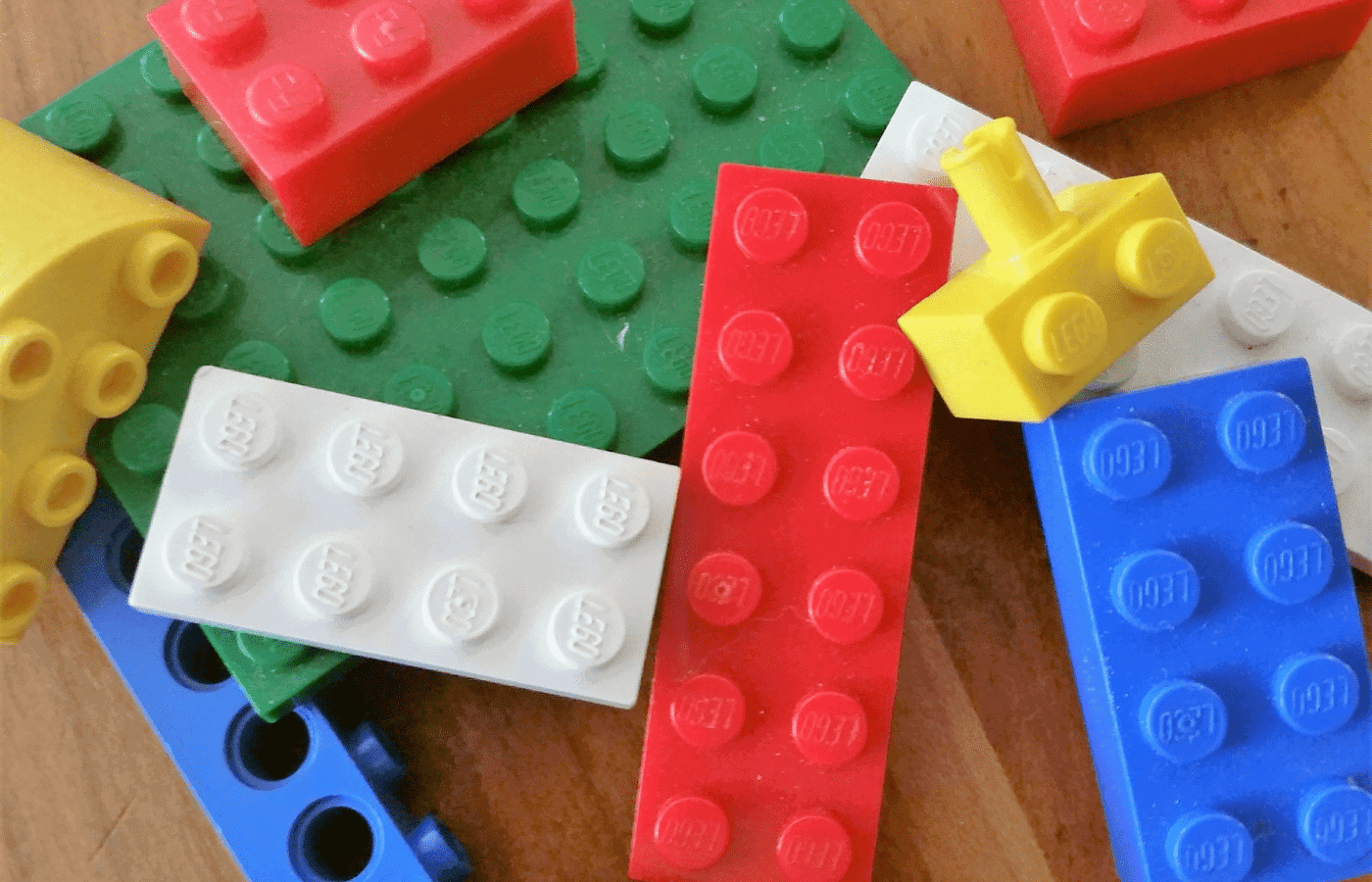Mold grows inside LEGO bricks when they do not dry properly after being submerged underwater. This mildew is sometimes difficult to see and can damage the health of anyone who plays with them. Luckily, you can clean mold from LEGO easily!
Use hot water and a sponge to clean mold from your LEGO bricks. There is no need to use harsh chemicals when cleaning mold from your LEGO, but you can add mild detergents. After cleaning your LEGO with warm water (or warm water and detergent), use a white vinegar and water solution to clean away leftover surface grime and bacteria.
When the cleaning process is complete, place the bricks indoors to dry in a sun-free environment. The duration of the drying process will vary based on the number of pieces.
Can Mold Grow On Legos?
Mold can grow on LEGO if left in compromising environments or dried improperly. The exterior of LEGO is unlikely to encounter any issues with mold because it dries well after getting wet. However, the interior of your LEGO can grow mold because of its deep ridges.
The mold inside LEGO will often go unseen, and you could build with the LEGO for days or weeks without anyone noticing the growing mildew. Unseen mildew is especially common for LEGO of dark colors like green, blue, and black. The mildew can blend into these dark colors and go unnoticed by builders when right in front of their faces.
To check the current price and availability of Lego Bricks, click here to view the selection on Amazon.
How Do You Clean Mold From Legos?
The best way to clean mold from LEGO is by using warm water. After cleaning the mold from your LEGO with warm water, you should sanitize and disinfect your LEGO to guarantee that they are safe for handling. Cleaning with vinegar is not necessary if you have used hot water. However, some people like to safeguard their health with this practice since it sterilizes the surface of your LEGO.
Rinse your LEGO bricks thoroughly after using any sanitizing mixtures or cleaning mixtures. Rinsing your LEGO removes any lasting residue from disinfectants or mixes. Residue can stop your bricks from fitting together correctly.
How Do You Deep Clean Legos?
Clean your LEGO bricks and parts by hand with hot water and mild detergent. Never use any harmful chemicals or cleaners with additives when washing your LEGO, or you can shorten their lifespan. Hot water should never reach above 104°F (40°C), or it can deteriorate the exterior protective layer of some LEGO pieces, which protect it from sun damage.
Always handwash your LEGO to guarantee they maintain their quality. Washing them in a machine like a dishwasher can overheat your LEGO, leading to greater problems like warping and discoloring.
How Do You Clean and Sanitize Legos?
The best way to clean and sanitize LEGO is by handwashing it with hot water no warmer than 104°F (40°C). Use a white vinegar and water mixture and avoid harsh chemicals. The white vinegar mixture is great at removing odors and killing bacteria. Avoid using isopropyl alcohol, bleach, or other chemicals since these can have harmful effects on the exterior film of your LEGO pieces.
LEGO Bricks
LEGO bricks are the easiest to clean and sanitize because you can place them in bulk containers to clean them. Bulk cleaning is easy, quick, and efficient. Submerge the LEGO bricks in a tub of a white vinegar solution and allow the LEGO to soak for several hours before returning later. Avoid placing your LEGO in direct sunlight while soaking or they might discolor or warp.
White vinegar produces strong odors. After soaking your LEGO, give them a thorough rinse to remove any unpleasant white vinegar odors. You may also mix mild detergent into a second mixture before giving your LEGO bricks a rinse if the odor is too strong for comfort.
LEGO Technic
Never put any LEGO technic in the washing machine, or you could severely damage it. Instead, wet a small portion of a paper towel with rubbing alcohol and gently wipe the surface of the LEGO technic.
Mildew should wipe clean from the surface and sanitize at the same time. Do not excessively repeat the process, or you could damage your LEGO.
Can I Put Legos in the Washing Machine?
Never put LEGO in the washing machine, or you can destroy them. LEGO bricks are not made to withstand the high temperature of the washing machine and would get ruined by the time the wash is complete.
There is no guarantee that the washing machine will successfully remove the mildew during a wash. Instead, putting LEGO in a washing machine will subject them to mildewing because of the water that gets trapped on the interior of the small pieces and then becomes difficult to remove.
How Do You Dry Legos?
After cleaning your LEGO with water, it is best to air dry them somewhere dry and shady, preferably indoors. Avoid direct sunlight to prevent surface damage and discoloration. Never use a heat source to dry your LEGO, or you can ruin your LEGO pieces.
Household appliances and beauty tools like the oven or hairdryer are tempting to dry your LEGO bricks. However, your bricks cannot withstand the constant high heat these products produce.
Heat causes warping, discoloration, cracking, and more. It can take longer to let your LEGO bricks air dry, but it is worth waiting because your LEGO set will last much longer.
Final Thoughts
LEGO can easily grow mildew if it is not air dried correctly after being submerged in water. There are many small pieces and holes in LEGO bricks where water can get stuck.
When mildew begins to form, the easiest way to remove the mold is by cleaning it or rubbing it away with warm water. Use a disposable towel or cleaning sponge to rub away the moldy area. After it is gone, let the pieces dry completely.
Never use heat to dry your LEGO, or you could severely damage them. If you are cleaning in bulk, leave your LEGO to air dry and return after 1 or 2 hours. All pieces should be completely dry. If they aren’t, use your best judgment to let them sit and return when you think they might be dry.


